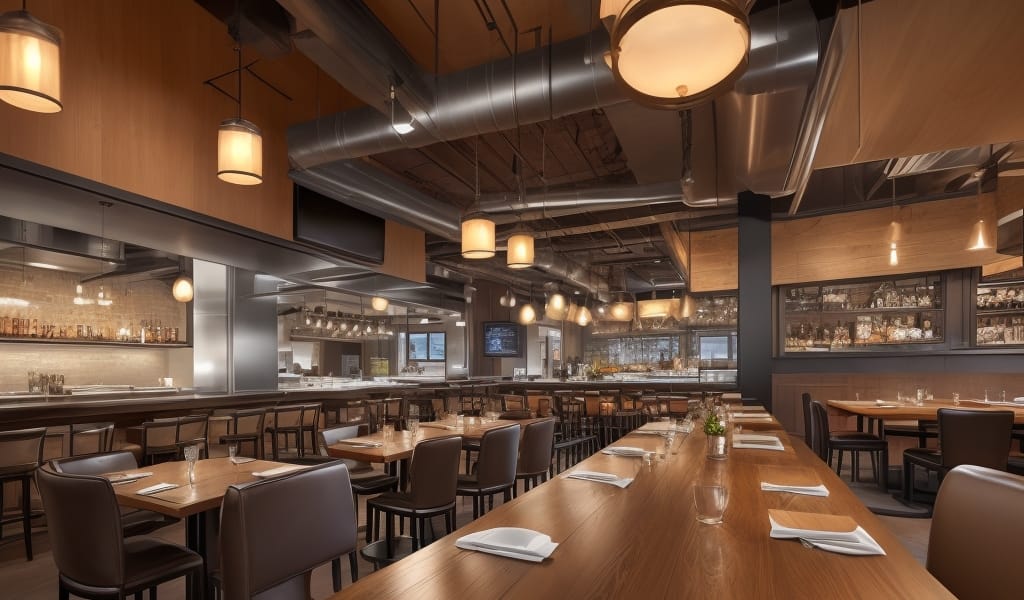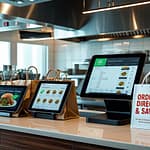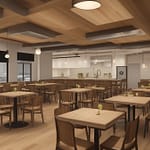Key Takeaways:
- Leverage QR code promotions to offer exclusive discounts and attract new customers.
- Incorporate QR codes into your restaurant’s marketing materials for a tech-savvy, modern touch.
- Utilize smart menus with QR codes to provide a contactless and efficient dining experience.
- Track customer behavior and preferences by analyzing data collected from QR code scans.
- Regularly update your QR code content to keep your marketing fresh and engaging for repeat customers.
QR Code Marketing: The Secret Weapon You’re Not Using Enough
How to Use QR Codes for Smarter Marketing
Imagine a marketing tool that’s affordable, easy to implement, and instantly measurable. QR codes are exactly that—yet many restaurant owners overlook their full potential. Whether you’re aiming to streamline ordering, enhance customer engagement, or boost promotional efforts, QR codes offer endless opportunities. In this guide, we’ll explore practical ways your restaurant can capitalize on QR code promotions, restaurant marketing tactics, and smart menus to drive smarter, better results.
Why QR Codes Are Crucial for Modern Restaurant Marketing
Quick Response (QR) codes first gained popularity for their ease in linking physical and digital worlds. Today, restaurants use QR codes for everything from menu access and customer feedback to promotional offers. When implemented strategically, these codes provide an efficient, contactless way for customers to engage with your restaurant, increasing satisfaction and loyalty.
Here are key benefits of QR code marketing:
- Convenience: Easy access to menus, promotions, and information right from a smartphone.
- Cost-effectiveness: Minimal investment required compared to traditional marketing methods.
- Measurability: Easily track usage, effectiveness, and customer behaviors.
Top Ways Restaurants Can Use QR Codes Effectively
1. Smart Menus: More Than Just a Digital Menu
The most familiar use of QR codes in restaurants today is offering digital menus. However, smart menus go far beyond a PDF version of your printed menu. They can enhance the customer experience by:
- Providing detailed descriptions, ingredient sourcing, and nutritional information.
- Suggesting wine pairings or upselling complementary dishes.
- Allowing real-time updates—no more printing costs every time you change a dish or price.
For example, the popular chain Panera Bread has adopted QR code menus across outlets. Customers can scan the QR code at their table and instantly access an interactive menu that enables ordering, customization, and payment, significantly improving service speed and customer satisfaction.
2. QR Code Promotions and Exclusive Offers
QR code promotions can incentivize customers and drive repeat visits. You can use them to:
- Offer discounts specifically for QR code users.
- Create time-sensitive offers to boost traffic during slow periods.
- Launch loyalty programs where customers scan to earn points or rewards.
Consider Starbucks’ successful QR-based loyalty initiative. Customers scan QR codes through the Starbucks app to gain stars that contribute to free beverages and exclusive promotions. This simple yet effective system keeps customers coming back and encourages higher spending.
3. Enhancing Customer Feedback and Engagement
QR codes can simplify customer feedback collection and increase engagement. By placing a QR code at tables or on receipts, you can promptly capture customer opinions. This allows you to:
- Quickly identify areas needing improvement.
- Engage directly with customers who have provided feedback.
- Build stronger customer relationships by promptly addressing concerns.
For instance, Chipotle includes QR codes on their receipts that link customers directly to feedback surveys. This has enabled Chipotle to rapidly address customer concerns, improving overall customer satisfaction dramatically.
4. Leveraging QR Codes for Social Media and Online Presence
QR codes serve as bridges between offline interactions and your online presence. Strategically placed QR codes can encourage diners to:
- Follow your restaurant on social media.
- Share their dining experiences online.
- Access exclusive online content or behind-the-scenes looks.
A great example is Shake Shack’s use of QR codes to direct diners to their Instagram page, encouraging immediate follows and interactions. This has significantly boosted their online community and engagement rates.
How to Implement QR Codes in Your Restaurant Marketing Strategy
Step 1: Define Clear Objectives
Before creating QR codes, identify the specific outcomes you’re seeking. Are you looking to increase customer engagement, streamline ordering, or promote new dishes? A clear objective guides your QR campaign strategy and helps measure its success.
Step 2: Choose the Right Type of QR Code
QR codes can be static or dynamic:
- Static QR Codes: Permanent URL destination, suitable for long-term uses like menus.
- Dynamic QR Codes: Allow URL updates without changing the printed code, ideal for promotions and temporary offers.
Consider your goals when selecting the appropriate QR code type. Dynamic codes, although usually subscription-based, offer greater flexibility and data tracking capabilities.
Step 3: Design Your QR Codes for Accessibility and Visibility
Your QR codes need to be easily scannable and visually appealing. Follow these best practices:
- Ensure the QR code contrasts well with its background.
- Test scanning from various angles and lighting conditions.
- Place codes in visible, logical locations (tables, menus, walls, receipts).
Step 4: Track and Analyze QR Code Performance
Monitor the effectiveness of your QR codes by tracking metrics such as:
- Number of scans and unique users.
- Engagement rates from QR-driven campaigns.
- Customer feedback and reviews collected via QR codes.
Regular analysis allows you to refine your approach, continually improving your marketing efforts.
Common Mistakes to Avoid with QR Code Marketing
While QR codes offer significant potential, avoid these common pitfalls:
- Not Testing Thoroughly: Always verify your QR code works properly before deploying widely.
- Poor Placement: QR codes should be easily visible and accessible.
- Lacking Clear Instructions: Some customers may still be unfamiliar with QR codes—provide clear, simple instructions to encourage usage.
Real-World Case Study: How Domino’s Pizza Boosted Sales with QR Codes
Domino’s leveraged QR codes on pizza boxes to offer special discounts and easy reordering. By scanning the code, customers accessed personalized deals and could quickly reorder their favorite pizzas. This campaign resulted in a noticeable increase in repeat orders, customer engagement, and overall sales. Domino’s demonstrates how strategic QR code use can yield tangible benefits for restaurants of all sizes.
Conclusion: Unleash the Power of QR Codes Today
QR code marketing is more than a passing trend—it’s an essential strategy for modern restaurants aiming to deliver smarter, more personalized experiences. From smart menus and targeted promotions to greater customer engagement, the benefits are clear and measurable. By thoughtfully integrating QR codes into your marketing strategy, your restaurant can reach new heights in customer satisfaction, loyalty, and profitability. Start implementing QR codes today and unlock their true potential in your business.






Comments
Be the first to comment on this article.